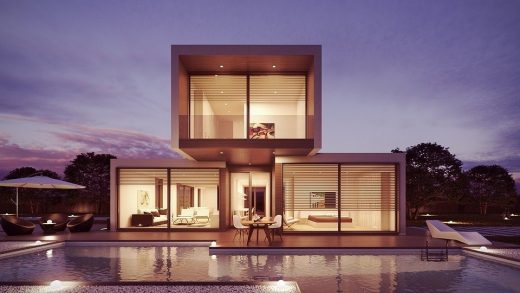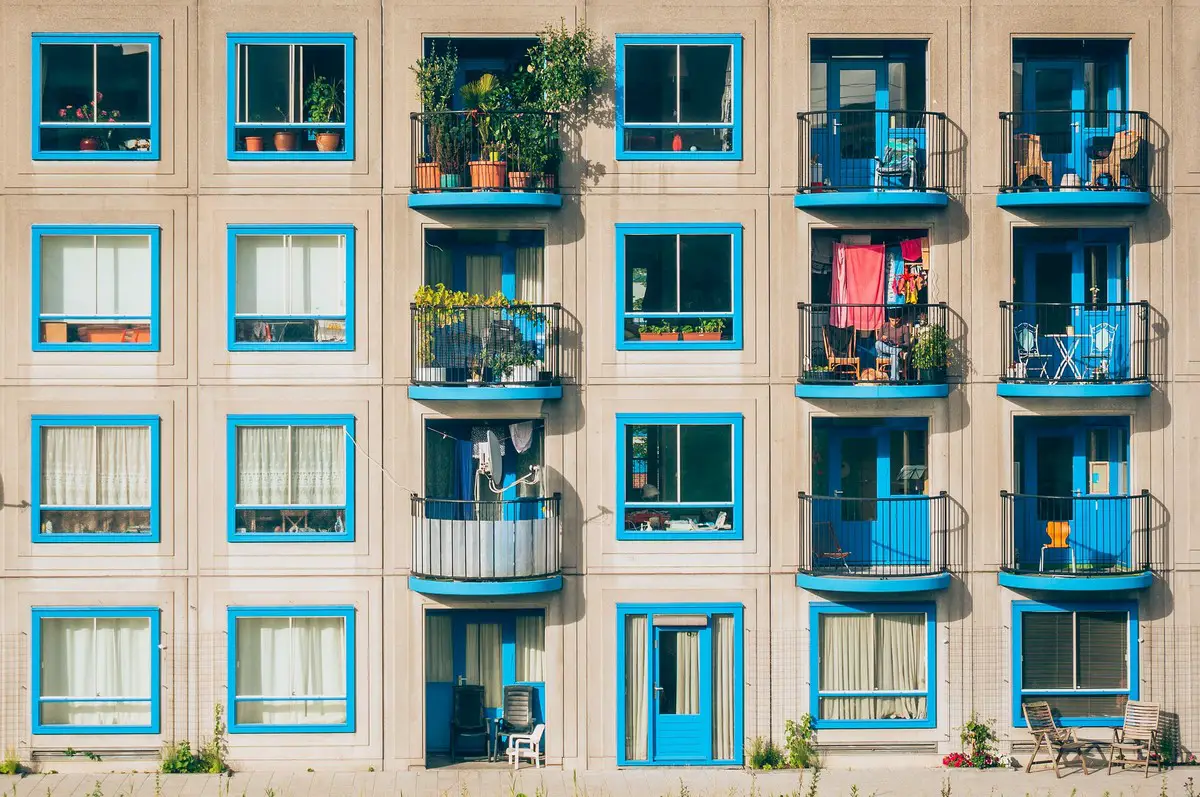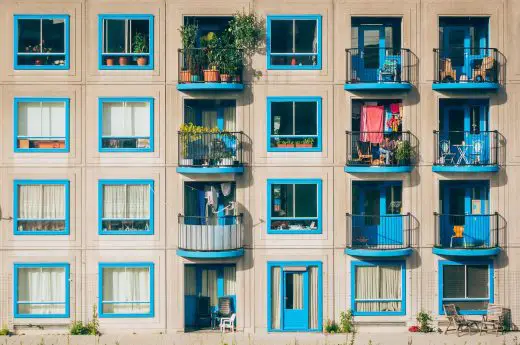Trusted How can a building make you feel better? Advice, Home Tips, Property Guide
How can a building make you feel better?
18 Dec 2019
Health and wellness are buzzwords in the design and architecture spheres right now, but can a building have a genuine impact on wellbeing – even recovery?
Whilst considering people and how they’ll interact with a building ought to always have been a driving consideration in architecture, it is becoming more popular to put further emphasis on how the building will make users of it feel.
The International WELL Building Institute (IWBI), behind the ‘world’s leading health-focused building standard’, has enjoyed huge growth in recent months. It is hosting its inaugural conference in April 2020, having announced that the standard is now being applied in 55 countries and, as of summer 2019, 8441 people in 82 countries are working toward becoming WELL Accredited Professionals.
Ann Marie Aguilar, IWBI Director of Operations, for EMEA, said: “An overall people-centric approach to architecture and design can be used to promote health and well-being.
“Light, for example, is a critical factor for healthy sleep. Light is the primary driver that aligns our body’s biological clock, our circadian rhythm, with the sun’s 24-hour day.
“The emerging field of biophilia – the idea that humans have an affinity towards the natural world – helps us to understand why access to nature and other natural elements are linked to a range of positive outcomes, such as mitigating cognitive fatigue, lowering stress and improving mood.
“When it comes to promoting mental health, incorporating beauty and mindful design through artwork can create a calming environment and positively impact mood. Incorporating biophilic design through environmental elements, light, patterns and colors of nature, as well as connection to the outdoors are key to supporting positive mental health and happiness.”
Poor design and maintenance can lead to ‘sick building syndrome’ – an NHS recognised phenomenon where people become unwell due to time spent in a particular space. This may include headaches, blocked or runny nose, sore eyes and difficulty concentrating.
Ventilation, temperature, lighting and excessive screen time may all be contributing factors to sick building syndrome. Other failures of the building may add to the problem, such as a lack of ways to get away from the task in hand to have a break and socialise with colleagues.
World-leading expert on workplace wellness Professor Sir Cary Cooper, Professor of Organisational Psychology and Health at Manchester Business School, said: “Physical environment is part of the wellbeing puzzle, but it’s not taken seriously enough.
“You have to invest to get it right. Either you have to do a refurbishment which is expensive or build something new which is also expensive.
“Many senior executives who run organisations don’t think the investment is worth it deep down, not that they’d say that. They think ‘it’s going to cost 200 grand and they don’t think it’ll make that much difference.”
Sir Cary said the investment doesn’t actually need to be sizeable to make a tangible difference to how staff feel in their workplace.
Bringing nature in, with visible greenery, recently labelled ‘biophilic design,’ is one factor he believes makes a huge difference. Areas that aid relaxation and communication during the working day are also key.
Ensuring people have some say in their physical environment and facilitating ways for them to contribute to shaping it to meet their needs are key in having an impact.
It’s vital ‘psychological environment,’ is being nurtured too.
Employers must ensure managers have high emotional intelligence, staff feel valued and trusted, they have some autonomy in their working arrangements – ideally via flexible working arrangements and that they are not required to work excessive hours.
Sir Cooper said: “The physical environment is important, but if you have a lousy psychological environment you won’t compensate for that.
“The important thing with physical environment is showing people you are prepared to invest in them. If you make an effort and do as much as you can with as much as you have got, people will feel valued.”
Curator of a recent exhibition at London’s Wellcome Collection exploring how architecture impacts health Emily Sargent, told iNews: “Buildings can have a powerful influence on feelings of wellbeing.
“Historically, much ill health has been about lack of access to light and clean air. If architecture itself can improve those things – through better ventilation, access to outside space and so on – then the building itself becomes a kind of cure.”
As the buildings featured in the exhibition indicated, including a 1933 Finnish sanatorium, it’s not a new concept.
The Hanging Gardens of Babylon is seen as an example of biophilic design.
Florence Nightingale, who died in 1910, was specific about the physical environment’s impact on recovery and not just in terms of hygiene.
She wrote: “Second only to fresh air, however, I should be inclined to rank light in importance for the sick…Among kindred effects of light I may mention, from experience, as quite perceptible in promoting recovery, the being able to see out of a window, instead of looking against a dead wall, the bright colours of flowers, the being able to read in bed by the light of a window close to the bedhead.
“It is generally said that the effect is upon the mind. Perhaps so, but it is no less so upon the body on that account.
“All hospital buildings in this climate should be erected so that as great a surface as possible should receive direct sunlight.”
More than 100 years on, these principles are driving what is being seen as a revolutionary new addiction rehab centre, Delamere, in Cheshire. Delamare is set in green belt and opens at the beginning of 2020. It will be filled with gigantic floor to ceiling windows, indulgent amounts of space in shared and private areas and carefully considered and incorporated outdoor areas.
Architect Rob Henderson, director at JDA Architects, who are behind the build said the firm was given an exacting brief, driven by a passionate belief that the right environment aids and accelerates recovery and good value mattered more than low spend.
He said: “In terms of being able to get people to open up – it’s a case of ‘I’m at a really low ebb. This is my starting point to a new future and it looks and feels fantastic.’
“You’ll be coming into something that is akin to a boutique hotel that will relax you and start you on your way to recovery. It is a really clever thing to do.
“How does it help you get better going into a really tight single bedroom. It’s just pretty grim. If that’s your first introduction to the service, how does that make you engage with that whole process?”
Delamere founder Martin Preston said: “We know how important a truly therapeutic environment is in healthcare and have therefore created what works.
“Rehab is an industry characterised by people who want to make a difference having to do it on a shoestring. Environment is often underinvested in. Delamere is here to change that.”
Today’s architects may not be pioneering the concept that buildings can impact wellbeing, but perhaps they are now truly delivering on it.
Sir Winston Churchill may have been among those who’d say it has taken long enough.
“We shape our buildings and afterwards our buildings shape us,” he once said. Now we have to ensure they’re shaping us for the better.
Comments on this guide to How can a building make you feel better? advice article are welcome.
Building Articles

image courtesy of article provider
Comments / photos for the How can a building make you feel better? page welcome


